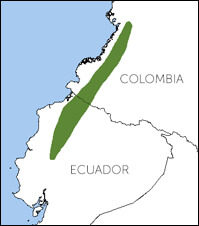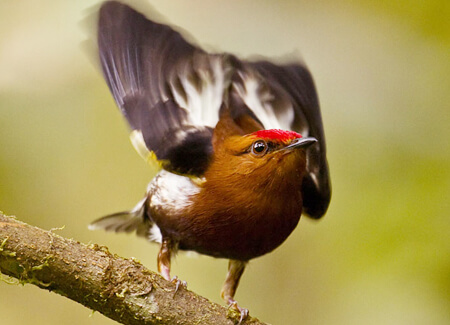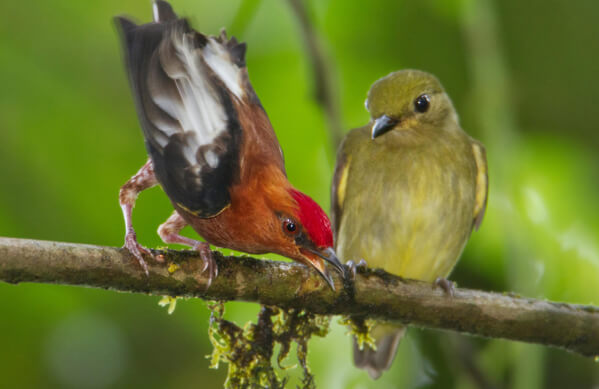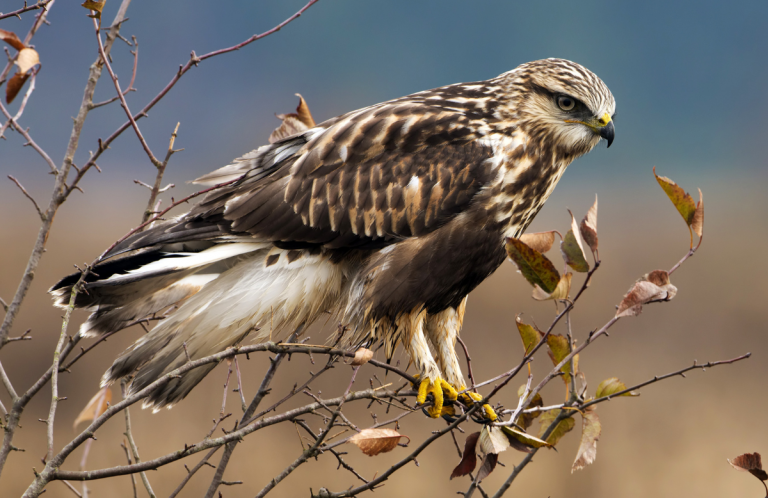 The fascinating Club-winged Manakin has modified wing feathers that enable the bird to make its “song” with its wings. The ridged, club-shaped feathers rake across each other, much like a spoon moving across a washboard, and produce a series of buzzing and snapping sounds.
The fascinating Club-winged Manakin has modified wing feathers that enable the bird to make its “song” with its wings. The ridged, club-shaped feathers rake across each other, much like a spoon moving across a washboard, and produce a series of buzzing and snapping sounds.
Club-winged Manakin Music
This acoustic trick, which allows crickets to “sing,” is common in insects but unique among vertebrates. During courtship, the male Club-winged Manakin raises its wings over its back and shakes them back and forth at over 100 times each second, producing a loud, violin-like tone. (By contrast, the legendarily fast hummingbirds, such as the Ruby-throated and Rufous, only flap their wings 75 to 90 times per second).
Oversized, solid wing bones and enlarged wing muscles allow these quick movements—one of the fastest limb movements of any vertebrate.
Sign up for ABC's eNews to learn how you can help protect birds

Club-winged Manakin male displaying for females. Photo by Dusan Brinkhuizen
Living Life on the Lek
These birds are sexually dimorphic (males are colorful, females are drab) and form leks to breed. Males gather at a site—perhaps using the same spot for generations—to display and win the attention of females.
Females only visit the lek to mate. Aside from their annual molt, however, males spend most of their lives on the lek, waiting for the next female to visit. Manakins don't form pair bonds, and after mating with a favored male, the female leaves the lek to build a cup-shaped nest and raise the young on her own.
Club-winged Manakins feed mostly on fruit, sometimes supplemented by insects. Their mouths have a wide gape, which allows them to swallow fruits that are very large in relation to their size. Like the Banded Cotinga and other fruit-eating birds, manakins are effective seed dispersers, helping to assure the continued abundance of their food supply.
Birds of Buenaventura
The Club-winged Manakin can be seen displaying at Ecuador's Buenaventura Reserve, established in 1999 by ABC partner Fundación Jocotoco. Now encompassing 5,583 acres as a result of acquisitions supported by ABC and others, the reserve boasts a lodge and trail system where visitors can look for this bird and other species, including the El Oro Parakeet and Long-wattled Umbrellabird. (More information on visiting Buenaventura can be found here.)
ABC partnered with World Land Trust to support Jocotoco in the purchase of a 233-acre addition that expanded the Buenaventura reserve. This land purchase ensures that birds such as the Club-winged Manakin will have a permanent home.
Donate to support ABC's conservation mission!



















































